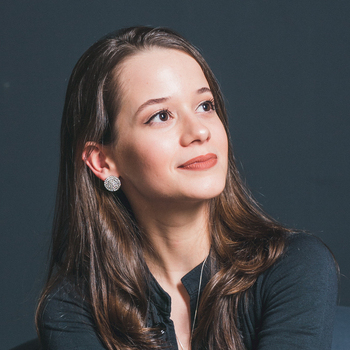
How committed people, product mindset in our teams and future-based language unlock results beyond what’s predictable for our customers.
Every great product starts with a declaration. What’s common in all great products you use every day? They didn’t just pop into existence. Quite the opposite: great results are anything but natural. It takes a team of committed individuals working together, informed by their users and inspired by a vision, to meet real needs. And while they might not be natural, they are absolutely achievable. How? We call it the powerful product team.
It starts with committed people
“What I came to understand deeply and in a new way once I made my way into the scrappier start-up world is that people have power. A company’s job isn’t to empower people; it’s to remind people that they walk in the door with power and to create the conditions for them to exercise it. Do that, and you will be astonished by the great work they will do for you.”
Patty McCord, Powerful
By exchanging promises we generate commitment — we give our “word” that we will see it through and, little by little, by doing what we said we’d do (or not doing it, but letting others know as soon as we find out), we move action forward. The ones that move action forward the most are called leaders — of which there are many in our teams, since leadership is not about hierarchy.
“I hope you can see that true leadership is a big part of what separates the great product people from the merely good ones. So no matter your title or level, if you aspire to be great, don’t be afraid to lead.”
Marty Cagan, Behind Every Great Product
A leader, in the context of a powerful product team, is defined as an ordinary, everyday person with extraordinary commitment to a bold future. “In fact leadership is all about giving your word to something that no one knows how to accomplish.”[1] Being passionate about something bigger than themselves draws in the people around them. Being committed makes them give up the right to be a victim in their story.
Instead, leaders are always enthusiastic. They create new conversations, inviting possibilities about the future they’re engaged with and looking for how they can be cause in creating excellent products that transform the lives of their customers – who they listen to intently.
It starts by listening to customers
“In strong product organizations, teams exist (…) to serve the customers, in ways that meet the needs of the business.”
Marty Cagan, Empowered Product Teams
Something powerful begins when product teams become genuinely interested in their user’s lives and challenges. This is usually caused by a potent mix of curiosity and self-selecting bias. Over time, people who love the industry join, and people who join start loving the industry – everything’s interesting if you go deep enough.
It’s no wonder, then, that our powerful product teams are always listening to the customers: we’re passionate about serving them as we are about the possibilities of digital commerce. Patty McCords’ Powerful recounts how Netflix was filled with movie buffs from the very beginning, and how this made all the difference.
Yet customers are not the source of the solution…
“No customer ever asked Amazon to create the Prime membership program. (…) The truth is that customers are consistently not the source of true value creation and innovation. Of course, that doesn’t mean that we ignore our customers; quite the contrary (…) Your engineers need to understand the business context. (…) The magic so often happens when the actual engineers are able to witness the customer pain first hand.”
Marty Cagan, Customer Inspired; Technology Enabled
Becoming fully immersed in their day-to-day conversations, our teams get to see the world from the customer’s point-of-view and to talk their language. This engagement becomes a reward in itself: it gives our product teams not a recipe for what to build, but an ample vocabulary with which to declare a future worth creating, enabled by technology and design.
This declaration can only result from the close collaboration of the product manager with engineers and designers, who leverage their unique perspectives to power true innovation. This is a future no customer could predict or ask for because they didn’t know was possible — but which they fall in love with immediately.
It starts from the future
“Everyone experiences a future in front of them, even though few could articulate it. It goes beyond what they expect to happen, hope will happen, or think might happen. This future lives at a gut level. We know it’s what will happen, whether we can give words to it or not. We call this the default future, and every person has one. So does every organization.”
Steve Zaffron, The Three Laws of Performance [2]
We are all living into some future. When we go automatically and mechanically about our day we don’t give it a lot of thought, but the reality is that this future governs our actions — they are consistent with it. The conversations we have generate it, as we actively seek validation for it. We interpret every situation in a way that reinforces our beliefs, opinions and biases.
Powerful product teams establish new conversations that invite new futures, using a simple and declarative language. Through the product perspective, we declare a desired future that leaves everyone excited and engaged. Having articulated this future, we work backwards, from the future to the present, to find out what must be built. The declaration doesn’t adapt itself to the world, circumstances or facts. It creates the world – in the possibility of a future.
“There are two different ways to use language. The first is descriptive—using language to depict or represent things as they are or have been. (…) Future-based language, also called generative language, has the power to create new futures, to craft vision (…). It doesn’t describe how a situation occurs; it transforms how it occurs. It does this by rewriting the future.”
Steve Zaffron, The Three Laws of Performance
If you ever participated in a long, draining meeting where everyone took turns describing or explaining the problems at hand, yet no movement towards any solution was made, you’re not alone. Understanding the context of a problem space is useful, but talking in terms of problems limits our ability to think beyond the obvious — and that’s where great, innovative products reside.
Leaders master the conversational environment and are adept at future-based, declarative language. They are responsible for deliberately guiding the conversations the team has, making sure that every discussion starts from the viewpoint of a desired future. This invites our teams to work free from the constraints of our current problems, to talk in terms of propositions, and to focus on the desired outcome.
Moving action forward
Working with committed people who are passionate about the challenges at hand is a transformative experience. But the true leaps of performance happen when we clearly articulate an engaging future that drives everyone to action. As we develop ownership over it, this future informs our actions in the present, which turn it into reality.
Like Kennedy declaring the man on the moon, our powerful product teams are able to pull off feats that no one ever thought possible. Because we start from a bright future and commit to it, extraordinary results follow. Not by magic, but by declaration.
If you’re interested in writing the future of digital commerce, join us. We’re just getting started!
[2] Steve Zaffron founded Vanto Group, a strategic management consulting firm focused on high performance. Special thanks to Olga Loffredi, Vanto Group CEO, who has made herself cause in the matter of VTEX declaring a bold future for itself.
















